- Submissions

Full Text
Strategies in Accounting and Management
The Economic Impact of Livestock Production & Trade: A Global Perspective
Saima Akhtar*, Gulnaz Hameed and Aliya Afzal
Department of Economics, PMAS Arid Agricultural University, Rawalpindi, Pakistan
*Corresponding author:Saima Akhtar, Ph. D Scholar, Department of Economics PMAS Arid Agricultural University, Rawalpindi, Pakistan
Submission:September 24, 2024;Published: October 21, 2024

ISSN:2770-6648Volume5 Issue 2
Abstract
Globally, livestock production has the potential to boost national economies and spur economic progress significantly. Accounting for 40% of total agricultural output in developed countries and 20% in developing economies in 2014. The present study identifies the connection between economic growth and livestock production, evaluates the link between livestock production and industry (trade), and highlights the market value, land use, and annual growth linked with livestock. Meta-analysis was done to gain insight into the existing literature whereas descriptive statistics were computed to analyze the demographic variables. Regression analysis was done on the five major subthemes of the study livestock Production, Productivity, land use, Annual Growth, and Market Value. The data was taken from FAO regarding livestock Production. The analysis was conducted on EViews Software. Regression Analysis revealed that livestock productivity has a positive and statistically significant effect on the economic impact of livestock production and trade. For every unit increase in livestock production, the economic impact is determined to increase by 0.743 units. For productivity, it is expected to grow by 0.235 units. For annual growth, it is anticipated to expand by 0.152 units. While for land use, the anticipation is up to an extension of 0.065 units. Also, in the case of market performance, it is expected to expand by 0.327 units. The Analysis and Regression model suggests that livestock production, productivity, and market performance are the most important factors influencing the economic impact of livestock production and trade. Policymakers and industry stakeholders may consider strategies to improve these factors to promote economic growth and development in the livestock sector.
Keywords:Economic impact; Livestock; Productivity; Trade; Market value; Annual growth; Land use
Introduction
The flexibility of the global food system, the environment, and the more than a billion people living in poverty in developing countries are greatly impacted by what we do. Furthermore, our earth can be affected by our actions. The world’s natural system and food supplies are severely strained, as our culture has come to be understood. The global economy depends heavily on the production of cattle, which has significant effects on commerce and economic expansion. An important part of the global economy, impacting both developed and developing nations, is livestock production and trade. Livestock has a wide range of effects on the economy, including productivity, market value, yearly growth, and land use. Livestock is an essential part of the agricultural sector because of its substantial contributions to the GDP, employment, and food security of agriculture. This research explores the global economic impacts of cattle commerce and production, providing insight into the interrelated forces that influence global markets and sectors. The present study attempts to provide a thorough knowledge of the intricate connection between livestock production and economic development by analyzing important economic indicators, trade patterns, market dynamics, and value chains related to livestock products. The study intends to fill in the gaps in current literature and add significant knowledge to the area using empirical evidence and insights. Research has shown that the growing population, urbanization, and rising affluence are driving up demand for animal products. The Food and Agriculture Organization (FAO) estimates that the global livestock industry accounts for approximately 40% of the total value of agricultural production and that the annual trade in livestock products is worth billions of dollars (FAO, 2020). The livestock industry is growing quickly in emerging economies, where this rise has been especially noticeable. The data from the Economic Cooperation and Development (OECD) and Food & Agricultural Organization (FAO) revealed that in developing countries, the growing sector in the agricultural sector is livestock (OECD & FAO, 2017). Such types of changes exert huge pressure on the globe including climate change posing a burden on the global level.
Currently, the cattle industry is crucial to both food security and supply. According to FAOSTAT (2020), livestock products (meat, milk, and eggs) account for 15%, 31%, and varying amounts of the global per capita supply of calories and protein, depending on the location (see Appendix for the computation of values mentioned in the Introduction). Approximately 30% and 6% of the world’s supply of ruminant meat and milk, respectively, come from grazing systems on frequently unsuitable land for cropping (Herrero et al., 2013). The need to reduce the environmental impact of livestock production is urgent, as we search for sustainable ways to feed the global population in the years to come. The development of breeding, nutrition, and disease control has been the driving force behind increases in cattle productivity. Rojas-Downing et al.
[1], for example, pointed out that advances in technology and better practices have greatly increased livestock productivity, which has boosted economic growth. But these developments also bring with them concerns about sustainability and the influence on the environment, especially concerning land use and greenhouse gas emissions [2]. The livestock sector is huge. 17 billion animals are present in the world eating, and excreting, and are useful with the perspective of food production. The economic impact of cattle production has increased further as a result of globalization and trade liberalization. The trade of cattle products has been made easier by the liberalization of agricultural markets, which has promoted economic integration and opened new markets. According to Anderson et al. (2009), nations possessing comparative advantages in livestock production have reaped significant economic benefits. The substantial impact that livestock products such as meat, dairy, and wool make on international trade is reflected in their market value. According to the FAO Meat Price Index, the average price of meat in 2019 was 175.7, up 9.4 points (5.6 per cent) from 2018 and recovering from a 2.3 per cent decrease in 2018. 2019 saw a sharp contraction in the global meat industry as pig meat production fell precipitously as a result of the African Swine Fever (ASF) pandemic that decimated substantial portions of the pig population in China and other East Asian countries. Despite an increase in the output of other meats, particularly poultry, the decrease in pig productivity left a void that could not be filled. As a result, East Asia had a meat shortage and a simultaneous increase in import demand.
The management of land used for cattle production is still a crucial concern because it must strike a balance between the demand for higher output and environmental sustainability. Since 30% of the world’s ice-free land is used for livestock systems, sustainable land management techniques are crucial (Herrero et al., 2013). To tackle these obstacles, comprehensive strategies that consider the financial, societal, and ecological aspects are necessary. Livestock plays multiple roles from social to economic. These roles are both positive and negative depending on the area. The example could range from pollution as a negative consequence of livestock production to crop production as a positive consequence of livestock production.
Problem statement
Livestock production has the potential to contribute significantly to national economies worldwide, accounting for 40% of total agricultural output in developed countries and 20% in developing economies in 2014. The livestock sector has the potential to create jobs and reduce inequality, directly contributing to Sustainable development goals in promoting inclusive and sustainable economic growth, employment, and decent work for all. The paper aims to uncover how Livestock production can enhance economic growth through its direct contribution to rural livelihoods and agricultural output, as well as its link with other industries [3].
Research objectives
1. To comprehend the relationship between economic
growth and livestock production, quantitatively analyze
economic indicators and data on livestock output.
2. To assess the effect on commerce and industry, look at
livestock product value chains, market dynamics, and trade
patterns.
3. To get insight into the economic relevance and
sustainability of livestock production, analyze trends in market
value, land use patterns, and annual growth rates.
To enhance knowledge and close the gaps in literature, present empirical data regarding the relationship between industry, livestock production, and economic growth.
Research questions
The paper will highlight how economic growth and livestock
production are associated.
1. What employment prospects are created by livestock
production?
2. How do livestock donate to the economic advancement of
a nation?
3. What impact does livestock production have on aquatic
utilization?
4. To what scope do sustainable expansion goals rank and
identify the impact of livestock creation?
Significance of study
Livestock plays multiple roles from social to economic. These roles are both positive and negative depending on the area. The paper highlighted different domains of the livestock sector that are playing positive roles whereas the domains with negative roles are also discussed. The past has thrown light on the idea of livestock Production and consumption as one of the growing sectors in agriculture. Due to an immense increase in income livestock production has been revolutionized. The demand for animal products is expected to increase due to the world population, which is forecasted to grow from 7.6 billion in 2017 to 8.6 billion in 2030. The expansion of the livestock industry can have significant economic ripple effects that extend beyond the agricultural domain, both upward and outward. Acosta [4] makes use of the data collected from 62 countries from 1970 to 2014 to estimate the response of the agriculture and non-agriculture sectors concerning livestock production. The analysis highlighted that non- agricultural sectors were more prone to accept changes in livestock production. An increase of 1% in livestock contributes to almost 0.76% of the agriculture sector.
Literature Review
Herrero et al. [5] states that livestock production takes place in different forms such as pastoral or grasslands. It has been noted that most of the livestock production takes place in rural areas. Whereas the urban areas are also playing their parts together they are making a strong contribution to the livestock sector. The percentage of beef obtained is 50, whereas for lamb it’s 72, and in the case of milk and poultry it is 41 and 53 percent respectively. These trends are seen to be growing in the future as well (Rosenfgrant et al. 2009). These systems are serving as an important component in food security (livestock) globally as they are contributing up to 50% [5,6]. Livestock production is considered an important economic activity. These products are highly valuable, especially in the case of crops. For example: globally, soya beans are 10 times less than the price of red meat whereas 70% price contribution is from milk production from livestock (FAOSTAT, 2011). The trade is dominated by egg and dairy products, but meat is an important source obtained from livestock in a few countries such as Brazil, and Thailand (FAO, 2009). More than 80% of the population living in Africa depends upon livestock whereas the Bangladesh and the Indian population depend on livestock comprised of 40% to 66% (FAO, 2009). Livestock play an important role in livelihood. The most crucial source of livestock is its income generation. Globally livestock is contributing to income generation for 68% of households. Certain types of crises related to climate could be hard for poor households. This is true for the farmers living in rural areas where there is less financial support when they are faced with certain crises like situations [7]. Livestock has been seen as Resilient against certain crisis-like situations. Herds are seen as an asset that can be utilized whenever there is a need [8]. In times of low and uneven rainfall, which often result in crop losses, livestock production systems become extremely important. This is particularly true when credit facilities are unavailable. These systems are essential for ensuring food security and sustaining livelihoods in such situations [7]. In situations of inadequate and unequal rainfall, the importance of livestock production systems becomes crucial to ensure food security and sustain livelihoods, particularly when credit facilities are unavailable. Farmers who own both crops and livestock are better equipped to cope with external stress, but it has been weakened due to some factors. Livestock is taking a share of 40% in the developed countries and almost 20% in the developing countries. The data from the Economic Cooperation and Development (OECD) and Food & Agricultural Organization (FAO) revealed that in developing countries, the growing sector in the agricultural sector is livestock (OECD & FAO, 2017). Not much data has been observed regarding economic growth and poverty eradication [9], (Janvry 2009).
Livestock is playing its role in income generation to determine whether poor people can perform good jobs or not [10]. The major challenge faced by developing countries is the creation of employment opportunities. Keeping in view this phenomenon, poverty is at its peak. As livestock is the most crucial source of livelihood, that is the reason people are trying to expand livestock and provide opportunities associated with livestock to jobless people. Table 1 depicts the small stakeholders in agricultural producers are 79% with an average farm of 0.8 Ha and livestock of 1.3 LTU. This reveals that if smallholders are less, there are lower chances of creating employment opportunities. It has been estimated that almost 13% of the population in the world is undernourished. The reason for hunger is not just a matter of famine. There is enough food to feed everyone on the globe and still faced with malnutrition globally [11]. The UN MDG, later known as the Sustainable Development Goals highlighted the proportion of the population suffering from hunger from 1990 to 2015. The proportion decreased by 23.3 % to 12.9%. Certain countries fail to obtain dietary fiber, resulting in micro nutritional deficiency (FAO, 2016a). The population tolerating hunger is increasing drastically. The data estimation by the FAO report highlights that hunger will be a challenge till 2030 (FAO, 2017a) (Figure 1).
Table 1:Smallholder factors of perception.
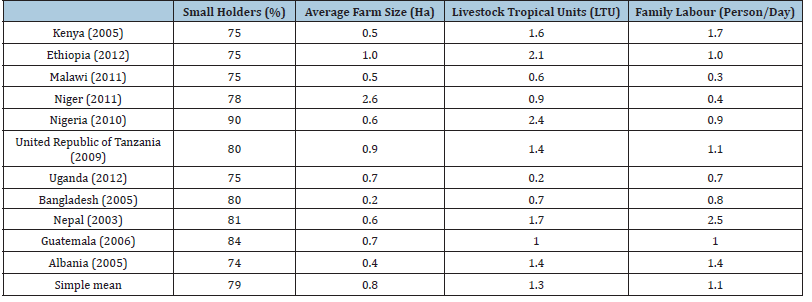
Note: (Source: FAO, 2017). The table represents the factors of perception keeping in view the stakeholders, farm size, livestock, and family labor.
Figure 1:Depicting the prevalence & percentage of undernourished people in the globe (2000- 2016).
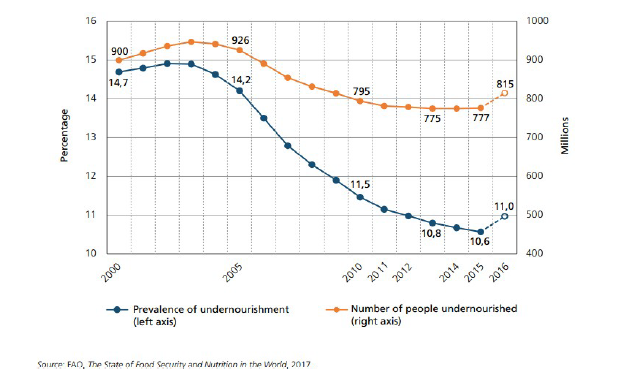
Methodology, Results, Findings & Discussion
Two approaches were utilized to evaluate the economic impact of livestock production and Trade. Meta-analysis is done to gain insight into existing literature. Regression analysis was done on the five major subthemes of the study livestock Production, Productivity, land use, Annual Growth, and Market Value. The data is taken from FAO regarding Livestock Production. The analysis is conducted on EViews Software. Regression Analysis revealed that livestock productivity has a positive and statistically significant effect on the economic impact of livestock production and trade. Regression analysis was computed based on the data obtained by FAO.
Global trends impacting the livestock sector
Figure 2:Growing trends in key commodity groups, 2008-17 & 2018-30.
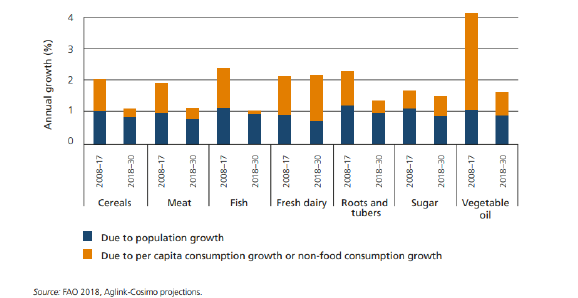
It is expected that the population will rise to 60 and 40% all around the globe from urban to rural areas. It has also been anticipated that the global scale should uplift itself to 2.8% annually. Also, the growth in developing countries would be faster [12]. The coming years will depict some changes in the GDP on a global level. The global demand for food is projected to rise due to population growth, urbanization, and income growth. However, except for fresh milk, which is expected to have a higher increase in demand growth, most of the commodities analyzed below are expected to experience an increase in demand (Figure 2-4).
Figure 3:Growing trends in livestock production (diary) between 2018-30.
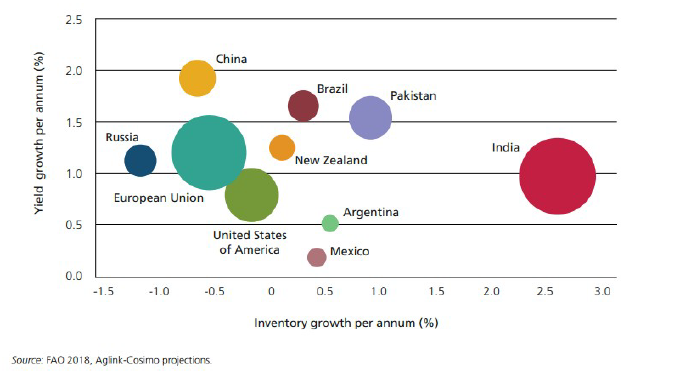
Figure 4:Growing trends in livestock (meat) production 2015-17 & 2030.
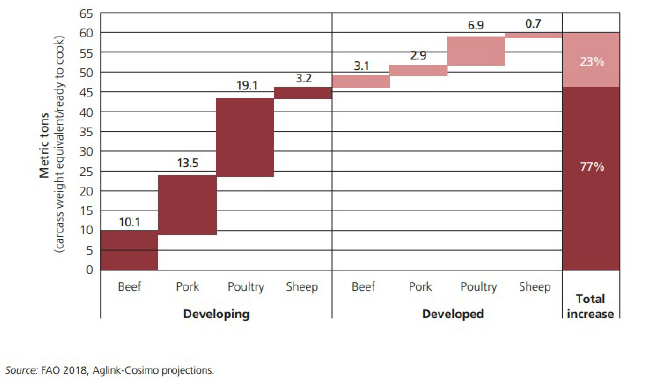
Theoretical benefits of trade
Trading in livestock production results in response to the international differences in the product’s market price. If a country can sell its goods at a higher price in the global market than what it would fetch domestically, then exporting is advantageous. On the other hand, importing goods is beneficial if the cost of importing them is lower than producing them domestically. The theory of comparative advantage highlights that developing and developed countries can benefit. The more the trade is done the more income it will produce, and the more economic growth can result. Employment opportunities could also be increased [13].
Productivity
Livestock production has seen to be Increasing in the past 15 years. From 2000 to 2014, the percentage of production (meat & dairy) increased to 39% and 38% respectively. If a country wants to increase its productivity and efficiency, it can use partial factor substitution (PFP) techniques such as intensifying feeding or increasing capital investment to improve productivity per head of livestock. However, this may only show an improvement in the level of PFP, whereas the TFP remained unchanged. To truly increase productivity, a country needs to focus on increasing the productivity of all factors such as land, capital, labor, water, and energy, which can be a significant challenge [4]. The last 2 years have shown an increase in agricultural productivity from livestock production (Table 2).
Table 2:Calculation of TFP growth rates by sub-sector.

Note: (Source: Ludena et al. [13]). The table represents the total factor productivity based on 3 sectors of agriculture.
Land Use
Nearly 5 billion hectares of land is known as Agricultural land where the livestock gaze. Livestock are not only useful for humans as food but they also support human livelihood by eating the plants that are not eatable by humans [12]. Livestock also makes a strong contribution to making the food available. According to Mottet et al. [14], almost 1/3 of the cereal crops are consumed by livestock. The percentage of consumption varies from ruminants to nonruminants.
Market performance
The livestock sector has evolved with time leading to an increase in operation scale and an increase in the number of producers (Acosta 2014). This mechanism is occurring in developing as well as developed countries. It has been noted in the case of both developing and developed countries (Figure 5 & 6).
Figure 5:Representing prices of livestock in livestock market.
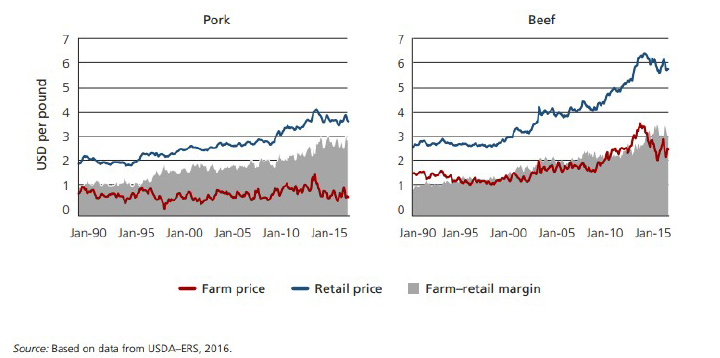
Figure 6:Representing the population census of livestock in Pakistan. Note: Source: Rehman et al. [24].
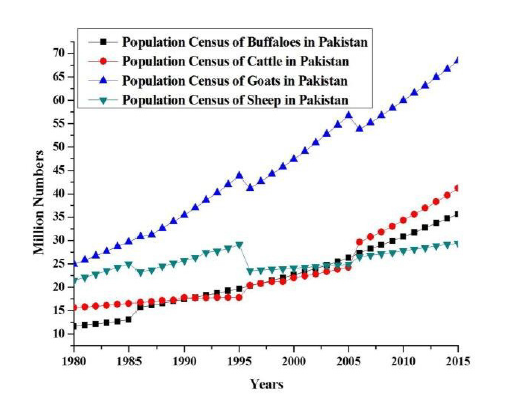
Regression analysis
(Table 3).
Table 3:Computing regression analysis.

Note:The higher T-value indicates greater confidence in the predictor. Economic Impact = 2.121 + 0.743 (Livestock production) + 0.235 (Productivity) + 0.152 (Annual Growth) + 0.065 (Land Use) + 0.327 (Market Performance)
Interpretation
Livestock production has a positive and statistically significant effect on the economic impact of livestock production and trade. For every unit increase in livestock production, the economic impact is expected to increase by 0.743 units. For productivity, it is expected to increase by 0.235 units. For annual growth, it is anticipated to expand by 0.152 units. Whereas for land use, the anticipation is up to an extension of 0.065 units. Also, in the case of market performance, it is expected to expand by 0.327 units (Table 4).
Table 4:Global trade & livestock production.

FAQ = Food Agricultural Organization.
Conclusion & Future Implications
The study concludes by highlighting the important role that livestock production plays in the economies of the countries it studies. It also shows that the productivity of livestock, their success in the market, and their annual growth all positively and statistically significantly affect economic growth. Productivity, annual growth, and market performance all show significant increases with each unit increase in livestock output, according to the results of a thorough meta- analysis of the research that has already been published and a rigorous regression analysis using data from the FAO. These findings underscore the vital role that the livestock industry plays in propelling economic growth, implying that policymakers and industry participants have to give top priority to initiatives that strengthen these vital components to promote the livestock industry’s sustainable expansion and progress [15-26].
The analysis suggested that livestock production, productivity, and market performance are the most important factors influencing the economic impact of livestock production and trade. The analysis of the study highlighted the complex roles livestock is playing in the developing countries of the world. In developing nations, livestock is serving as a crucial contributor to economies. It is a source of nourishment and a great source of income generation. The livestock sector has also been criticized for some adverse effects such as pollution. Still this sector is playing a crucial role in economic development and trade. Policymakers and industry stakeholders may consider strategies to improve these factors to promote economic growth and development in the livestock sector. It has been seen as a sector helpful in eradicating poverty. This topic has not been analyzed in this way; it could be a direction for future researchers.
References
- Rojas-Downing MM, Nejadhashemi AP, Harrigan T, Woznicki SA (2017) Climate change and livestock: Impacts, adaptation, and mitigation. Climate Risk Management 16: 145-163.
- Gerber PJ, Steinfeld H, Henderson B, Mottet A, Opio C, et al. (2013) Tackling climate change through livestock: A global assessment of emissions and mitigation opportunities. Food and Agriculture Organization of the United Nations (FAO).
- FAO V (2018) Shaping the future of livestock: Sustainably, responsibly, and efficiently.
- Abed R, Acosta A (2018) Assessing livestock total factor productivity: A Malmquist Index approach. African Journal of Agricultural and Resource Economics 13(4): 297-306.
- Herrero M, Thornton PK, Gerber P, Reid RS (2009) Livestock, livelihoods, and the environment: understanding the trade-offs. Current Opinion in Environmental Sustainability 1(2): 111-120.
- Herrero M, Thornton PK, Notenbaert AM, Wood S, Msangi S, et al. (2010) Smart investments in sustainable food production: Revisiting mixed crop-livestock systems. Science 327(5967): 822-825.
- Banks J, Blundell R, Brugiavini A (2001) Risk pooling, precautionary saving, and consumption growth. The Review of Economic Studies 68(4): 757-779.
- Dercon S, Krishnan P (2002) Informal insurance, public transfers, and consumption smoothing. Department of Economics and Jesus College, Oxford & Cambridge Universities, United Kingdom 17: 1-22.
- Christiaensen L, Demery L, Kuhl J (2011) The (evolving) role of agriculture in poverty reduction-An empirical perspective. Journal of Development Economics 96(2): 239- 254.
- Hull K (2009) Understanding the relationship between economic growth, employment, and poverty reduction. Promoting pro-poor growth: Employment 1(1): 69-94.
- UN (2016) Transforming our world: The 2030 agenda for sustainable development. New York. A/RES/70/1.
- OECD & FAO (2012) Guidance for responsible agricultural supply chains. Recommendation of the council on principles for public governance of public–private partnerships.
- Ludena CE, Hertel TW, Preckel PV, Foster K, Nin A (2007) Productivity growth and convergence in crop, ruminant, and nonruminant production: Measurement and forecasts. Agricultural Economics 37(1): 1-17.
- Mottet A, de Haan C, Falcucci A, Tempio G, Opio C, et al. (2017) Livestock: On our plates or eating at our table? A new analysis of the food debate. Global Food Security 14: 1-8.
- Acosta A, Nicolli F, Karfakis P (2021) Coping with climate shocks: The complex role of livestock portfolios. World Development 146: 105546.
- Birthal PS, Taneja VK (2012) Operationalizing the pro-poor potential of livestock: Issues and strategies. Indian Journal of Animal Sciences 82(5): 441.
- De Janvry A, Sadoulet E (2015) Development economics: Theory and practice. Routledge.
- Devendra C (2013) Investments on pro-poor development projects on goats: Ensuring success for improved livelihoods. Asian-Australas J Anim Sci 26(1): 1-18.
- Fellmann T, Lankoski J (2012) In The 10th global forum for food and agriculture. FAO/OECD WORKSHOP. Red 23: 24.
- Food and Agriculture Organization of the United Nations (2017) The future of food and agriculture: Trends and challenges. Fao.
- FOOD O (2016) The state of food and agriculture. Climate change, agri.
- Joint FAO (2011) Food and agriculture organization of the United Nations. Caramel colours. Combined Compendium of Food Additive Specification, Monograph 11: 1817- 7077.
- Lee BX, Kjaerulf F, Turner S, Cohen L, Donnelly PD, et al. (2016) Transforming our world: Implementing the 2030 agenda through sustainable development goal indicators. J Public Health Policy 37: 13-31.
- Rehman A, Jingdong L, Chandio AA, Hussain I (2017) Livestock production and population census in Pakistan: Determining their relationship with agricultural GDP using econometric analysis. Information Processing in Agriculture 4(2): 168-177.
- Spiesshofer B (2018) Responsible enterprise. The Emergence of a Global Economic Order, pp. 393-405.
- World Health Organization (2021) Managing pesticides in agriculture and public health: A compendium of FAO and WHO guidelines and other resources. World Health Organization.
© 2024 Saima Akhtar. This is an open access article distributed under the terms of the Creative Commons Attribution License , which permits unrestricted use, distribution, and build upon your work non-commercially.
 a Creative Commons Attribution 4.0 International License. Based on a work at www.crimsonpublishers.com.
Best viewed in
a Creative Commons Attribution 4.0 International License. Based on a work at www.crimsonpublishers.com.
Best viewed in 







.jpg)






























 Editorial Board Registrations
Editorial Board Registrations Submit your Article
Submit your Article Refer a Friend
Refer a Friend Advertise With Us
Advertise With Us
.jpg)






.jpg)














.bmp)
.jpg)
.png)
.jpg)










.jpg)






.png)

.png)



.png)






